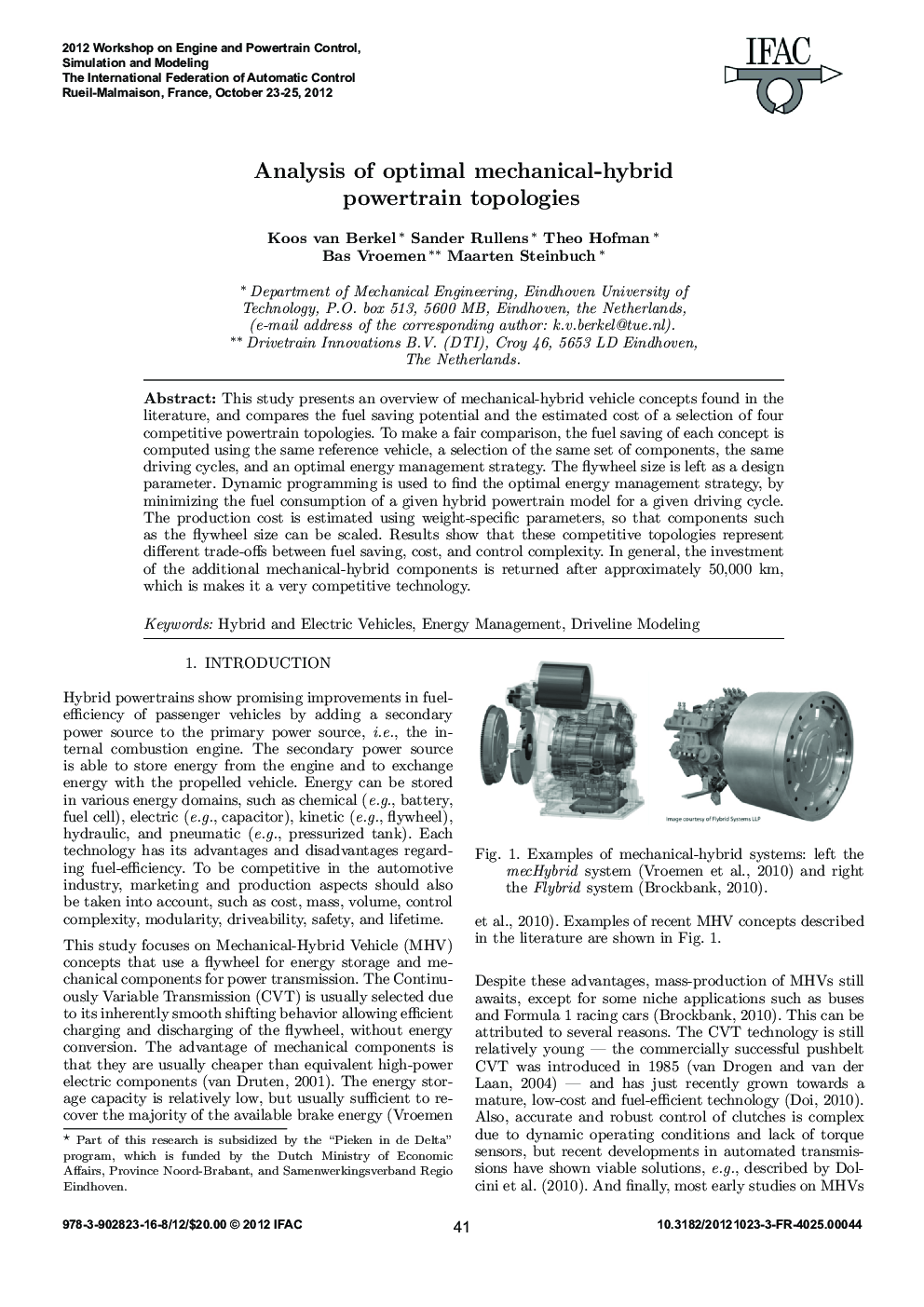| Article ID | Journal | Published Year | Pages | File Type |
|---|---|---|---|---|
| 713795 | IFAC Proceedings Volumes | 2012 | 8 Pages |
This study presents an overview of mechanical-hybrid vehicle concepts found in the literature, and compares the fuel saving potential and the estimated cost of a selection of four competitive powertrain topologies. To make a fair comparison, the fuel saving of each concept is computed using the same reference vehicle, a selection of the same set of components, the same driving cycles, and an optimal energy management strategy. The flywheel size is left as a design parameter. Dynamic programming is used to find the optimal energy management strategy, by minimizing the fuel consumption of a given hybrid powertrain model for a given driving cycle. The production cost is estimated using weight-specific parameters, so that components such as the flywheel size can be scaled. Results show that these competitive topologies represent different trade-offs between fuel saving, cost, and control complexity. In general, the investment of the additional mechanical-hybrid components is returned after approximately 50,000 km, which is makes it a very competitive technology.
